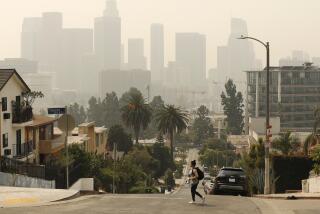EPA Proposes a Less Potent Dioxin Rating
- Share via
WASHINGTON — The Environmental Protection Agency is proposing to lower its estimate of the maximum likely cancer-causing potential of dioxin by a factor of 17, according to agency documents made available Wednesday.
Dioxin has been called the most powerful cause of cancer ever tested in laboratory animals, but there is controversy over whether it causes cancer in humans.
The EPA officially classifies dioxin as a “probable” cause of human cancer and regulates it as such, and the new estimates will not affect its position as the most potent probable carcinogen.
For example, even the lowered estimate would mean that dioxins are 10,000 times more powerful than PCB--polychlorinated biphenyl--compounds as causes of cancer.
2-Year Review
For two years the agency has been reviewing what is known about dioxin, at first believed to be an unavoidable chemical contaminant of certain pesticides but now believed to be an inevitable product of almost all combustion of fossil fuels.
EPA Administrator Lee M. Thomas ordered the review because the agency’s potency estimates were up to 1,000 times larger than the estimates used in other countries, and up to 100 times larger than those used by other federal agencies.
Dioxin is the name commonly given to the most toxic of 75 different compounds, all containing chlorine atoms attached to two benzene rings, the rings being linked by two oxygen atoms.
In August, the agency said it had found that dioxin-contaminated soils were less prevalent than feared, but the chemical was showing up in bleached paper products made by the kraft process.
Daily Ingestion
Up to now, the agency has used in its risk calculations a “unit risk” factor of .006 picogram (one trillionth of a gram) per kilogram (2.2 pounds) of body weight. This is the amount of dioxin which, ingested daily over 70 years, would raise the chance of developing cancer by one in a million.
Now, in a draft sent to outside scientists for comment, an agency working group is proposing to switch to 0.1 picogram per kilogram as the “unit risk.”
“Considering the strengths and weaknesses of each approach” to estimating cancer-causing potential, “0.1 picogram per kilogram per day has a reasonable scientific foundation and represents a rational science policy position,” the draft said.
More to Read
Sign up for Essential California
The most important California stories and recommendations in your inbox every morning.
You may occasionally receive promotional content from the Los Angeles Times.










